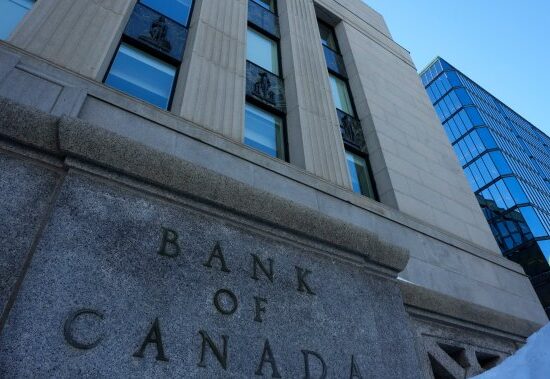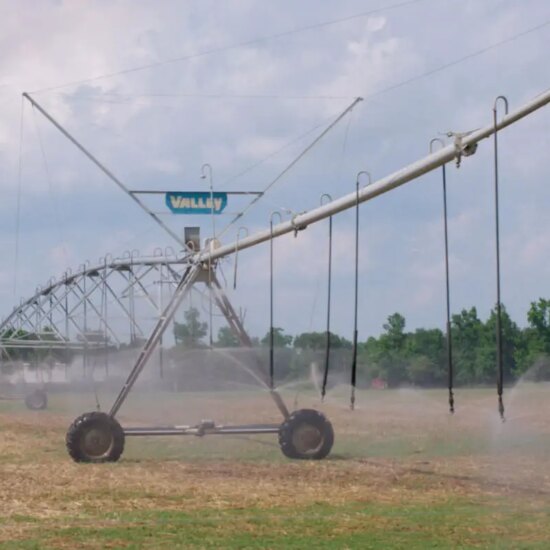The stunning collapse of two failing banks in the span of three days has many Americans wondering: Is my money safe?
The government takeovers of Silicon Valley Bank (SVB) on Friday and Signature Bank on Sunday sent shockwaves across the banking system and financial markets—not least because both were respected banks that unraveled so quickly.
But the short answer for the vast majority of Americans with bank accounts is that your money is safe and insured. Additionally, the U.S. government and the Federal Reserve acted quickly to rescue bank customers whose deposits were above the insured amount. They also enacted new measures to assist banks that need help stumping up the cash to give customers their money back.
There are still outstanding questions about the health of other midsize banks and whether the problems at SVB and Signature will lead to other bank failures. Major U.S. banks lost around $90 billion in stock market value on Monday, bringing their losses over the past three trading sessions to nearly $190 billion.
“The problem is that people start inferring that something’s wrong with other banks,” says Anat Admati, professor of finance and economics at Stanford University. “They lose confidence in the system. It’s a domino effect.”
There are some signs that the banking system could be facing larger, systemic issues—though nothing compared to the global financial crisis of 2008. At the end of 2022, U.S. banks were sitting on $620 billion in unrealized losses. That is, they are holding assets that had decreased in value—mostly due to rising interest rates. That figure is up from just $8 billion one year earlier. The significant unrealized losses, announced by the Federal Deposit Insurance Corporation last week, paint the picture of a banking system that is coming to grips with new risks posed by the Federal Reserve’s interest rate hikes, says Darrell Duffie, a management and finance professor at Stanford.
“A lot of banks own these long term bonds that go down in value when the Fed raises interest rates,” he says. “The $620 billion in unrealized losses is how much those banks would lose if they sold all their bonds.”
What’s happening with my money?
The Federal Deposit Insurance Corporation (FDIC) guarantees deposits on accounts up to $250,000. If you’ve got less than that in the bank, you’re covered by the $128 billion Deposit Insurance Fund, which is part of a program that has been around for nearly 90 years. Insured funds include those in savings accounts, checking accounts, money market accounts, and certificates of deposit (CDs).
For those who have more than that in their accounts—in the case of SVB more than 85% of deposits were not insured—the Federal Reserve and the U.S. government invoked a little known rule on Sunday that declared the bank failures a systematic risk. This allowed customers to have full access to their funds, even if their accounts exceeded $250,000. By Monday afternoon, SVB customers reported being able to access their accounts online.
Read More: Silicon Valley Bank Clients Will Get Funds—Even Those That Weren’t Insured, Government Says
President Joe Biden on Monday morning reassured Americans that deposits will “be there when you need them.” The Fed also announced that it was giving banks access to interest free loans to help protect bank customers and prevent other small and regional banks from collapsing.
But the government’s plan to guarantee full access to funds—even uninsured—only applies to SVB and Signature customers. Those with more than $250,000 stashed in a bank should consider spreading out the money into multiple accounts to stay under the insurance limit, Duffie suggests. “I would make sure that your bank is safe or split up their deposits across different banks. You are allowed to have as many different accounts as you like at different banks. So if you have $2.5 million, just put it in 10 different banks, then you don’t have to worry.”
Are other banks at risk?
Dozens of customers lined up outside of a First Republic Bank in southern California on March 11 eager to withdraw their funds in the wake of the collapse of Silicon Valley Bank.
Dania Maxwell–Los Angeles Times via Getty Images
Several smaller, regional banks on Monday rushed to reassure their customers and shareholders that they were in a better financial position than Silicon Valley Bank and Signature Bank.
But the assurances were met with skepticism. Shares of several regional banks fell sharply after the markets opened, triggering a series of temporary trading halts and raising fears that another bank could be headed for a similar fate.
The biggest stock plunge happened to First Republic Bank, a regional bank based in San Francisco. In 2022 the bank had experienced major turnover among its top executives and warned shareholders that the Fed’s interest rate increases were hurting its profitability.
First Republic had $119.5 billion in uninsured deposits at the end of last year, accounting for 67% of its total deposits. But on Sunday, the bank announced that it had $70 billion in “unused liquidity” after securing cash loans from the Federal Reserve and JPMorgan Chase, placing it on much more solid footing.
PacWest Bancorp, a regional bank in Los Angeles, also saw its stock fall significantly after depositors had recently pulled out around $700 million in cash, reducing its holdings to $33.2 billion as of Thursday. In a regulatory filing on Monday, PacWest reassured customers that it had quick access to around $14 billion through a combination of cash on hand, securities, a credit line, and access to the Fed’s new lending facility that was announced on Sunday.
Western Alliance, a Phoenix regional bank, reported on Friday that there had been “moderate” withdrawals from their $61.5 billion in deposits, with technology-related deposits dropping some $200 million in recent months. Its stock fell more than 50% at one point on Monday, though Western Alliance said its cash reserves “exceed $25 billion and are growing.”
Zions Bank, based in Salt Lake City, was also hammered by the recent turmoil. Its chief executive said the bank remained in strong financial condition, with access to “tens of billions of dollars of readily available liquidity” to go along with smaller accounts than the average balance at Silicon Valley Bank. But that didn’t stop its share price from falling over 40% on Monday.
How did we get here?
Duffie, of Stanford, says that the circumstances that led to the demise of SVB and Signature were unique and unlikely to purge other banks. Most of SVB’s clients were tech startups, many of which stashed large cash deposits from investors in accounts. They used the money to run their businesses and pay employees. Many startup founders reported having millions or tens of millions of dollars on deposit.
When SVB began having trouble, it sparked a bank run, which accelerated as clients discussed the health of the bank in Slack and WhatsApp groups.
“Most banks have smaller depositors. They don’t lose money when the bank goes under because they have deposit insurance and they don’t tend to run at the first sign of trouble,” Duffie says. “It’s not a small problem, but it’s also unlikely to morph into a general banking crisis.”
SVB’s unrealized losses from large holdings of U.S. government debt and mortgage-backed securities—purchased when interest rates were low—helped lead to its demise. Those assets lost value on the open market as interest rates climbed. As the bank struggled to keep enough cash to cover withdrawals, it had to sell bonds at a $1.8 billion loss—causing even more depositors to lose faith in the bank and head for the exits.
Some economic analysts have said that the troubles at SVB were also due to the recent spate of challenges for tech companies, which have seen stock prices plummet over the last 18 months, prompting massive layoffs across the industry. SVB was a major destination for tech startups, who deposited the cash raised from venture capital funds there. However, recently, many of these companies had begun withdrawing cash at a faster clip to help cover operations.
“The fact that the bank couldn’t foresee that coming and make sure that they had a portfolio positioned to meet those withdrawal requests is like a ski lodge being ill prepared for a snowstorm,” says Greg McBride, chief financial analyst at Bankrate.
But even though the bank mostly serves tech workers and venture capital-backed companies, Treasury Secretary Janet Yellen emphasized on Sunday that the high interest rate environment is the most likely reason for the fallout. “The problems with the tech sector aren’t at the heart of the problems at this bank,” Yellen said.
More Must-Reads From TIME














